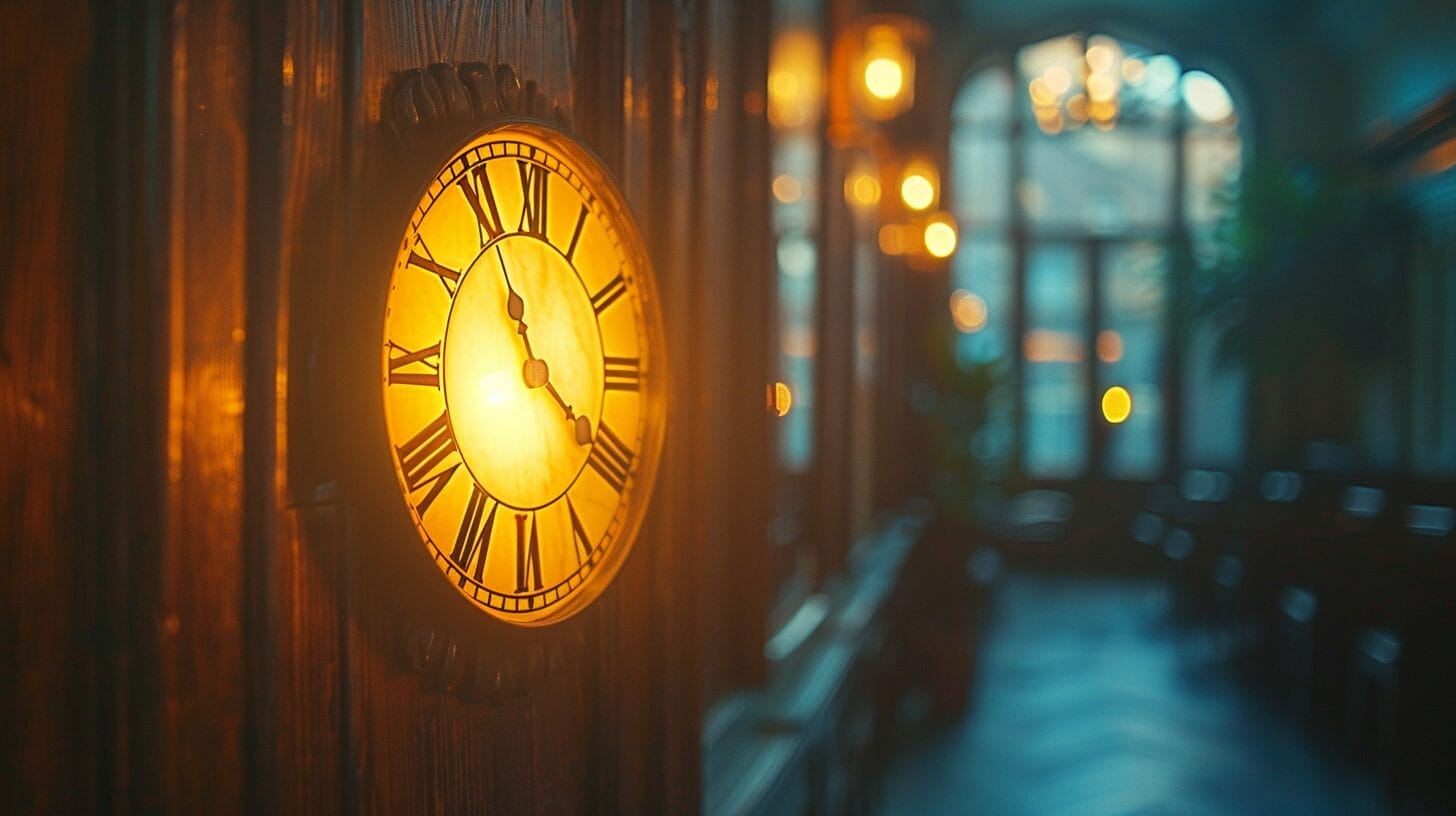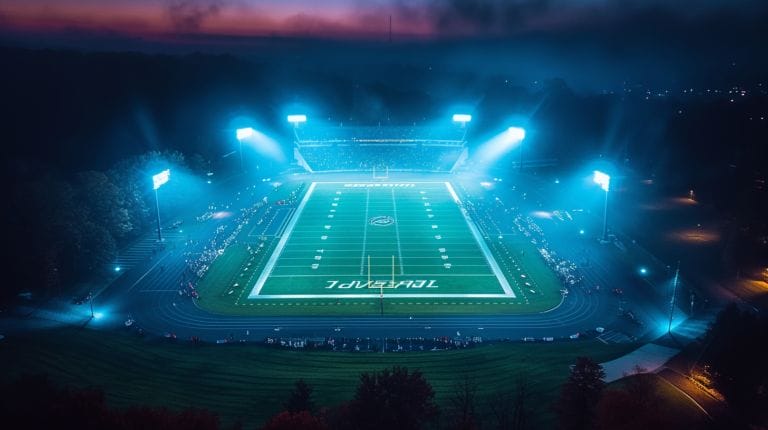How Long Can You Leave LED Lights On? Duration and Safety
Curious about how long can you leave LED lights on? In this brief guide, we delve into the optimal duration for illuminating LED lights while maintaining safety. Explore the factors affecting their lifespan and learn practical tips for maximizing efficiency without sacrificing longevity. Let’s uncover the secrets behind the ideal usage duration for LED lighting!
Key Takeaways
- Monitor LED light quality and condition for extended use.
- Maintain significant brightness levels to prolong lifespan.
- Check room temperature to prevent overheating risks.
- Use warm-toned LED lights to reduce sleep disruption.
- Invest in high-quality LED lights for efficiency and longevity.
Understanding the Lifespan and Efficiency of LED Lights
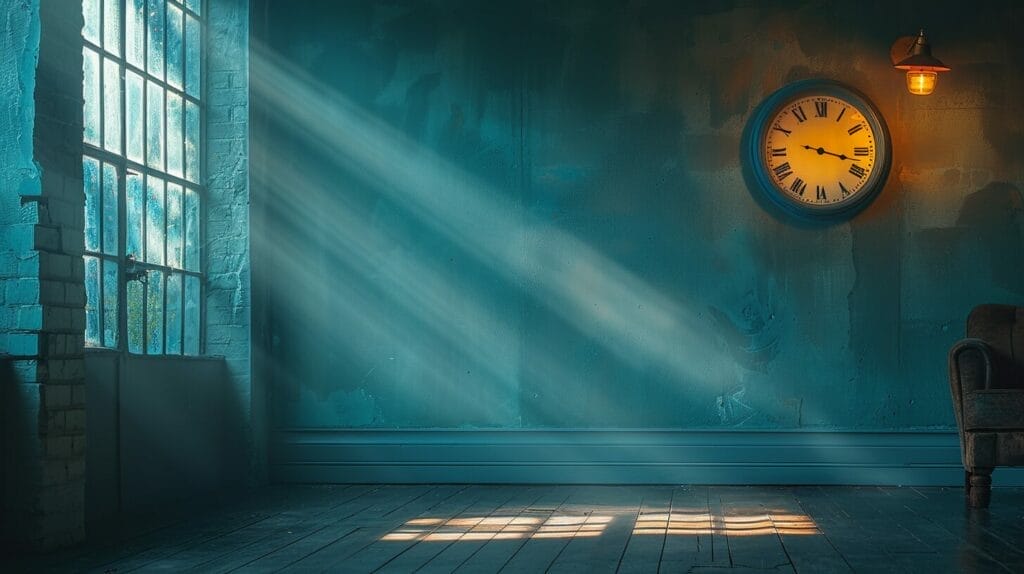
LED lights are known for their long lifespan and high efficiency when compared to traditional lighting. They convert a higher percentage of energy into light, rather than heat, hence reducing energy consumption and saving costs. In addition, LED lights generate less heat and remain cool to the touch even after extended use, making them a safer option.
Is it Safe to Leave LED Strip Lights On Overnight?
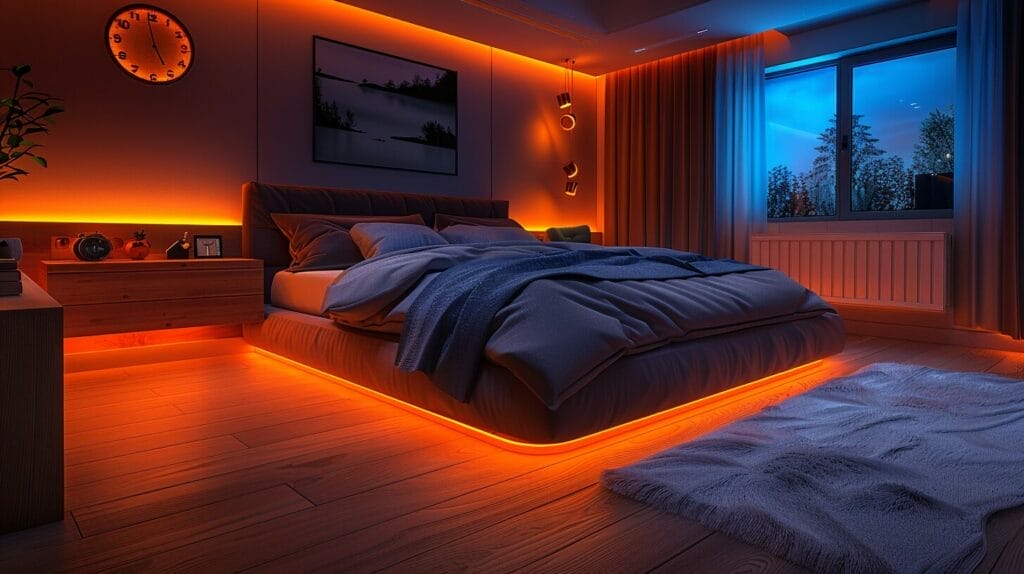
Leaving strip lights on overnight may pose potential risks if not properly managed. While modern LED strip lights are generally safe to use, prolonged usage can lead to certain safety hazards. Here are some key points to take into account:
- Safety Hazard: Leaving LED strip lights on overnight can increase the risk of overheating, potentially leading to fire hazards if not adequately ventilated.
- Impact on Energy Consumption: Continuous use of LED strip lights throughout the night can have a notable effect on energy consumption, leading to higher electricity bills.
- Prolonged Usage: Excessive use of LED strip lights can reduce their lifespan and efficiency over time, requiring more frequent replacements.
- Modern LED Strip Lights: Newer LED strip lights come with safety features like automatic shut-off timers to prevent overheating and reduce energy consumption.
It’s essential to balance the convenience of leaving LED strip lights on overnight with the potential risks they pose, such as disrupting melatonin production and affecting energy efficiency. Be mindful of safety guidelines and utilize modern features to guarantee a safe and efficient lighting experience.
Factors to Consider When Leaving LED Lights On

Consistently evaluating the quality and condition of our LED lights is essential when contemplating leaving them on for extended periods. Ensuring the brightness levels remain significant helps maintain a comfortable environment while also extending the lifespan of the lights.
LED lights emit minimal heat compared to traditional incandescent bulbs, reducing the risk of overheating. Monitoring the temperature of the room where the LED lights are installed is vital, as excessive heat can impact both the performance and longevity of the lights.
Understanding the duration for which LED lights can naturally glow without overheating is key to maximizing their efficiency and safety. By considering these factors, we can make informed decisions about leaving LED lights on for extended periods, balancing energy efficiency with the need for proper illumination.
As technology advances, innovations in LED lighting continue to enhance the user experience, offering both practicality and sustainability.
The Effect of LED Lights on Sleep
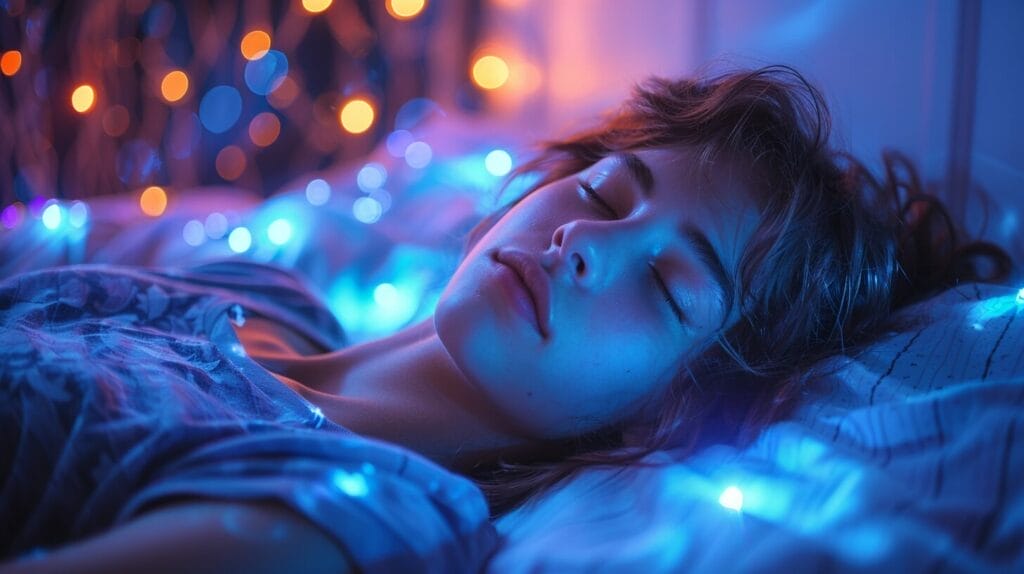
Understanding how the presence of ambient lighting, specifically from LED sources, can impact our sleep patterns is essential for maintaining a healthy rest routine. LED lights emit blue light, which can disrupt the production of melatonin, the hormone that regulates sleep. This disruption can affect our circadian rhythm, leading to difficulties falling asleep and achieving restful sleep cycles.
To mitigate the impact of LED lights on your sleep, consider the following:
- Use warm-toned LED lights: Opt for LEDs with lower color temperatures to minimize the blue light exposure before bedtime.
- Limit exposure before sleep: Reduce screen time and exposure to bright LED lights at least an hour before going to bed to support melatonin production.
- Embrace natural light: Expose yourself to natural light during the day to help regulate your circadian rhythm and improve sleep quality.
- Consider dimming options: Utilize dimmable LED lights or smart lighting systems to adjust light intensity based on the time of day, promoting a conducive sleep environment.
Maximizing the Efficiency and Lifespan of Your LED Lights
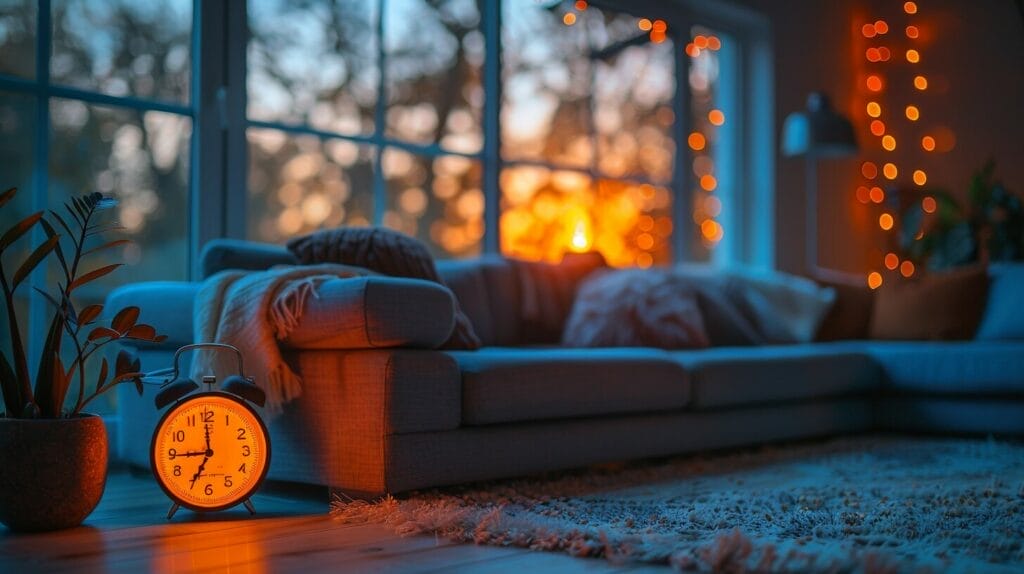
To guarantee peak performance and longevity of your LED lights, implementing appropriate usage practices and maintenance routines is essential. Start by investing in high-quality LED lights from recommended brands known for their durability and efficiency.
Proper installation, such as using the correct wattage and voltage, can prolong the lifespan of your LED lights. Additionally, reducing the number of on-off cycles can help maintain their efficiency over time.
Regularly cleaning your LED light bulbs and strip lights to remove dust and debris not only secures they shine brightly but also prevents overheating, which can decrease their lifespan.
Conclusion
To summarize, it’s safe to leave LED lights on for extended periods of time, but it’s crucial to take into account factors like heat dissipation and energy efficiency.
By taking precautions and using high-quality LED lights, you can maximize their lifespan and enjoy their benefits for years to come.
Remember to turn off unnecessary lights to save energy and create a comfortable environment for restful sleep.
Frequently Asked Questions
How long can you leave LED lights on?
You can leave LED lights on for extended periods of time without any safety concerns. LED bulbs are designed to last for thousands of hours of continuous use.
Is it safe to sleep with LED lights on?
It is safe to sleep with LED lights on as they produce minimal amounts of heat and are much safer compared to traditional light bulbs. LED lights have a minimal impact on your sleep quality.
Do LED lights save you money in the long run?
Yes, using LED strip lights can save you money in the long run as they consume less energy and have a longer lifespan compared to traditional light bulbs.
Are LED strip lights a good idea for lighting solutions?
Yes, LED strip lights are a good idea for lighting solutions as they are energy-efficient, produce little heat, and are cheap to operate. They are superior to fluorescent lighting options.
Are LED lights safer than traditional light bulbs?
Yes, LED lights are much safer than traditional light bulbs as they are well-manufactured and adhere to safety standards. They also emit less heat and are less likely to cause fires.

